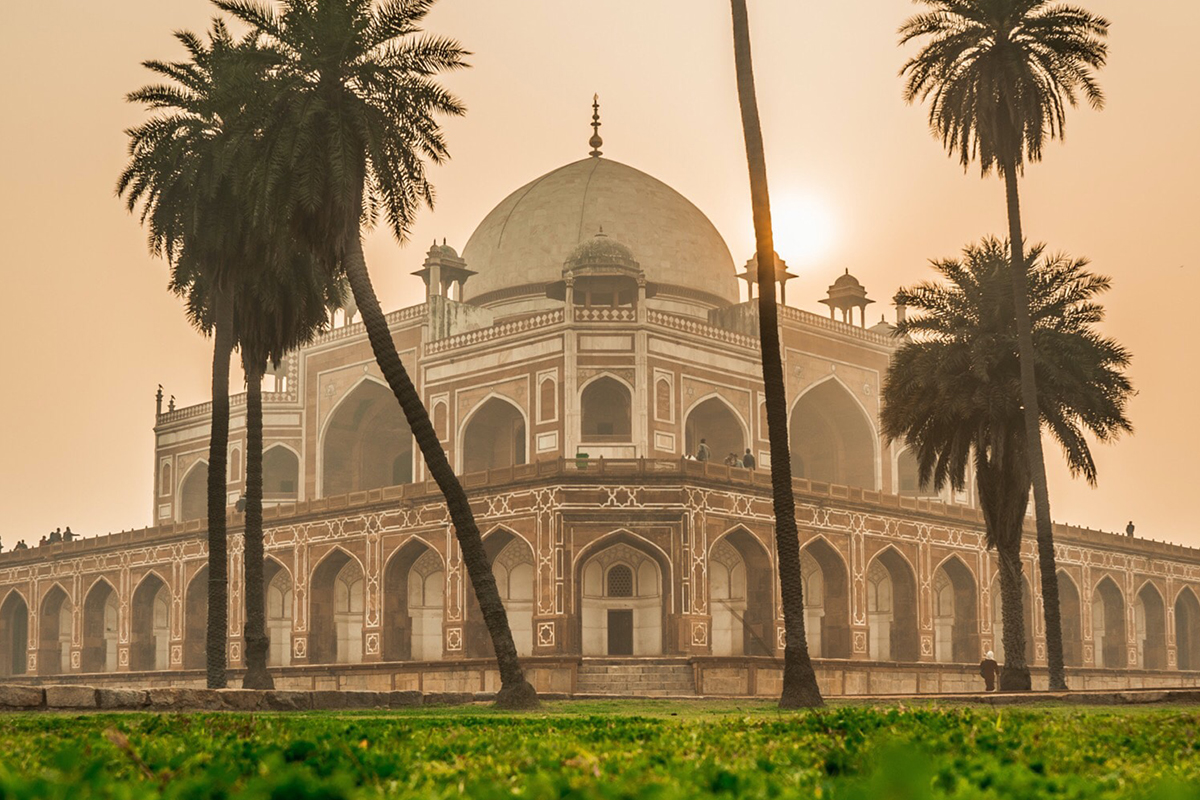Architectural Wonder: The Design Secrets of the Taj Mahal
One of the most famous structures in the world, the Taj Mahal, represents much more than just unending love. Its architectural style demonstrates a profound comprehension of engineering, symmetry, and aesthetic grace. Constructed by the Mughal ruler Shah Jahan between 1632 and 1653, it is an amazing example of human creativity and love. This article explores the complex architectural features that elevate the Taj Mahal to the status of one of the world’s greatest architectural wonders.
Background Information in History
The emperor Shah Jahan is credited with starting the Taj Mahal’s history when he ordered this majestic building to serve as a mausoleum for his beloved wife Mumtaz Mahal following her tragic death in 1631. The monument symbolizes his deep sorrow as well as his wish to build a burial space worthy of a queen. Thousands of artists and craftsmen worked on the project for more than 20 years, and the result is a legacy that has endured for generations.

Architectural Wonder: The Design Secrets of the Taj Mahal
One of the most famous structures in the world, the Taj Mahal, represents much more than just unending love. Its architectural style demonstrates a profound comprehension of engineering, symmetry, and aesthetic grace. Constructed by the Mughal ruler Shah Jahan between 1632 and 1653, it is an amazing example of human creativity and love. This article explores the complex architectural features that elevate the Taj Mahal to the status of one of the world’s greatest architectural wonders.
Background Information in History
The emperor Shah Jahan is credited with starting the Taj Mahal’s history when he ordered this majestic building to serve as a mausoleum for his beloved wife Mumtaz Mahal following her tragic death in 1631. The monument symbolizes his deep sorrow as well as his wish to build a burial space worthy of a queen. Thousands of artists and craftsmen worked on the project for more than 20 years, and the result is a legacy that has endured for generations.
Style of Architecture
Typical of Mughal architecture, the Taj Mahal’s design is a beautiful fusion of Islamic, Persian, and Indian architectural elements. Indian components are represented in the decorative motifs and inlay work, while Persian influences are evident in the use of symmetry, massive domes, and minarets. With a distinctive Mughal touch, the overall design embodies Islamic architectural concepts of harmony and balance.
What Makes the Taj Mahal Symmetric
The Taj Mahal’s flawless symmetry is among its most amazing qualities. Every component, including the building itself, the grounds, and the reflecting pool, is carefully thought out. This symmetry has symbolic significance in addition to being a demonstration of the architects’ talent. According to some, the balance stands for harmony, peace, and a representation of heavenly perfection.
Content Selection
White marble, mostly from Rajasthan’s Makrana, is used to build the Taj Mahal. Because of its purity and capacity to reflect light, this material was selected to have a constantly shifting appearance based on the time of day. The meticulous workmanship, which is inlaid with rare stones like lapis lazuli, turquoise, and jasper, adds to the monument’s splendor. White marble was chosen because it represents spirituality, purity, and tranquility, strengthening its standing as a hallowed area.
The Dome
Known as the onion dome, the Taj Mahal’s central dome is a remarkable architectural achievement for its era. At 73 meters (240 feet) in height, this magnificent dome is the structure’s focal point. The dome’s appearance of grandeur and delicacy can be attributed to the meticulous application of mathematics in its design. Its towering look attracts the eye upward, evoking the skies, and it is a flawless half-sphere perched atop a high drum.
The Minarets
There are four imposing minarets that surround the main building; they are each 40 meters (130 feet) tall. These minarets have a practical role in addition to being aesthetically pleasing. In the event of an earthquake, they were intended to slant slightly outward to prevent the main tomb from collapsing. The engineers’ vision and attention to detail are evident in this forward-thinking design.
The Gardens
The enormous charbagh (four-part) garden that surrounds the Taj Mahal is a representation of the Islamic idea of paradise. The garden, which is split up by paths and water channels, represents the peace and balance that the Taj Mahal itself exudes. The Taj Mahal exudes a sense of calm and tranquillity, which is further enhanced by the lush vegetation and blossoming flowers that create a serene atmosphere.
The Pool of Reflections
A breathtaking view of the Taj Mahal may be had from the lengthy reflecting pool in front of the building. This pool emphasizes the Taj Mahal’s symmetry and heightens its visual impact by helping to create a mirror image of the structure. Like the love it was constructed to honor, the monument’s reflection in the placid waters conveys a feeling of eternity.
Inlay and Calligraphy
The elaborate writing that covers the Taj Mahal’s walls is among its most exquisite features. The writing on these inscriptions, which are mainly Quranic verses, appears to be uniform in size from any distance because the script is written in a flowing style that gets smaller as it rises. The creativity continues with pietra dura, or the inlay of semi-precious stones into marble, which produces intricate and delicate geometric and floral patterns.
A Look Inside the Taj Mahal
The Taj Mahal’s interior design is similarly magnificent. Mumtaz Mahal and Shah Jahan’s tombs are located in the central room; however, they are essentially cenotaphs because the real graves are located in a lower chamber. More calligraphy, inlaid stones, and elaborate carvings adorn the walls, all of which are intended to evoke an ethereal beauty.
The Mumtaz Mahal Tomb
Mumtaz Mahal’s tomb is located in the center of the Taj Mahal. Beautiful flower themes and delicate writing adorn the tomb, showing Shah Jahan’s intense love for her. The monument’s significance as a representation of unending love and devotion is strengthened by the prominence of her tomb in the design.
Technical Achievements
The weight of the dome and minarets, in addition to the Taj Mahal’s enormous scale, presented several engineering difficulties during construction. The large marble blocks were lifted using scaffolding and pulleys, and a specially constructed foundation was built to sustain the weight of the building, among other inventive building methods.
Preservation and Reconstruction
The Taj Mahal has had to contend with the effects of aging, pollution, and environmental degradation over the ages. Its beauty has been preserved, nonetheless, thanks to continued conservation efforts. To preserve the monument’s integrity, structural reinforcements and laser cleaning are two examples of contemporary technologies in use.
In summary
The Taj Mahal is still regarded as one of the greatest architectural works of art in history because of its inventiveness as well as its beauty. Its complex symmetry balance, material selections, and engineering advancements guarantee that it will continue to astound future generations. Its everlasting symbolism of commitment and artistry is further enhanced by the love story that inspired its creation.
FAQs
What distinguishes the design of the Taj Mahal?
The Taj Mahal’s architecture is genuinely unique due to its flawless symmetry, use of white marble, and fusion of Islamic, Indian, and Persian architectural forms.
What was the duration of the Taj Mahal’s construction?
The Taj Mahal’s construction, which began in 1632 and ended in 1653, took about 22 years.
Why is the white marble in the Taj Mahal significant?
The white marble represents tranquility and cleanliness. Its capacity to reflect light enhances the monument’s otherworldly splendor.
Why is symmetry crucial to the architecture of the Taj Mahal?
The Taj Mahal’s design relies heavily on symmetry, which stands for harmony and balance.

Comments